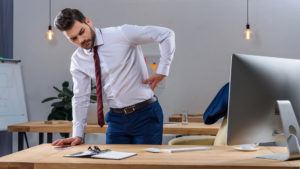Work injuries can be a stressful and frustrating experience for anyone. One moment you’re productive at your job, and the next, you’re dealing with an injury that not only affects your physical health but also brings a range of complications—from financial stress to strained relations with your employer. Whether you’re facing a back injury, neck pain from a work accident, or even whiplash work restrictions, it’s a lot to manage.
Employers may become frustrated with reduced productivity, and many patients are unsure of the steps they need to take to get back to work safely. At Portland Wellness Care, our goal is to help patients recover from work-related injuries with minimal downtime, offering the therapy, documentation, and holistic care needed to support your journey from injury to wellness.
Step 1: Get Evaluated by a Medical Clinic
The first and most critical step after a workplace injury is getting evaluated by a medical professional. At Portland Wellness Care, we specialize in treating patients who have been injured on the job in Portland, OR, offering services for work injury therapy, chiropractic evaluation, and documentation for workers’ comp cases.
Whether you’ve suffered a repetitive stress injury, back injury, or are dealing with neck pain after a work accident, a proper evaluation sets the tone for your recovery and supports your return to work plan after injury.
Step 2: Keep a Detailed Record of Diagnostics and Findings
After your initial evaluation, keeping a detailed and organized record of all diagnostic tests—like MRIs, X-rays, or chiropractic assessments—is essential. These documents are vital when filing for workers’ compensation and protecting yourself in case of future issues like being re-injured after returning to work.
Accurate documentation also helps streamline communication between your employer, case manager, and insurance provider, especially for more complex injuries like whiplash or chronic back pain.
Step 3: Coordinate with a Case Manager
A case manager plays a vital role in bridging the gap between you, your healthcare provider, and your employer. At Portland Wellness Care, we coordinate closely with your case manager to support your work injury recovery and define a clear return to work plan.
This may include:
This step is essential for ensuring a smooth transition and preventing setbacks like becoming reinjured after returning to work.
Step 4: Explore Rehabilitation Options
Rehabilitation is a cornerstone of your recovery. Portland Wellness Care offers a variety of work injury rehab solutions tailored to your injury and goals. This may include:
We focus on restoring function, improving mobility, and reducing pain—not just masking symptoms. Our providers work to uncover root causes and help you build strength to prevent future injuries.
Step 5: Understand Your Work Restrictions
Following a work injury, your healthcare provider may outline restrictions such as:
Understanding these limitations is critical. It’s also helpful to share them with your employer to explore modified duty options. Whether you’re returning to work after a back injury or recovering from a chronic pain condition, Portland Wellness Care will support you through every step.
Step 6: Track Your Progress and Stay Engaged
Commitment to your care plan ensures you recover fully. This includes attending all scheduled treatments, following your doctor’s guidance, and maintaining communication with your employer and case manager. If you experience pain flare-ups or setbacks, don’t ignore them—this could lead to becoming re-injured after returning to work.
What If You’re Scared to Go Back to Work After an Injury?
If you’re feeling anxious or scared to go back to work after an injury, you’re not alone. Many patients worry about whether they’ll reinjure themselves or if their employer will understand their needs. Portland Wellness Care offers workplace injury recovery support that addresses both physical and emotional readiness. We help you build confidence through personalized care, empowering you to return at the right pace and with the right support.
A Holistic Approach to Recovery
At Portland Wellness Care, we treat you—not just your injury. Whether you’re injured at work in Portland or suffering from long-term work-related injuries, our team provides comprehensive, patient-first care. We take pride in helping you get back to work after injury, stronger, more confident, and ready to thrive again.






